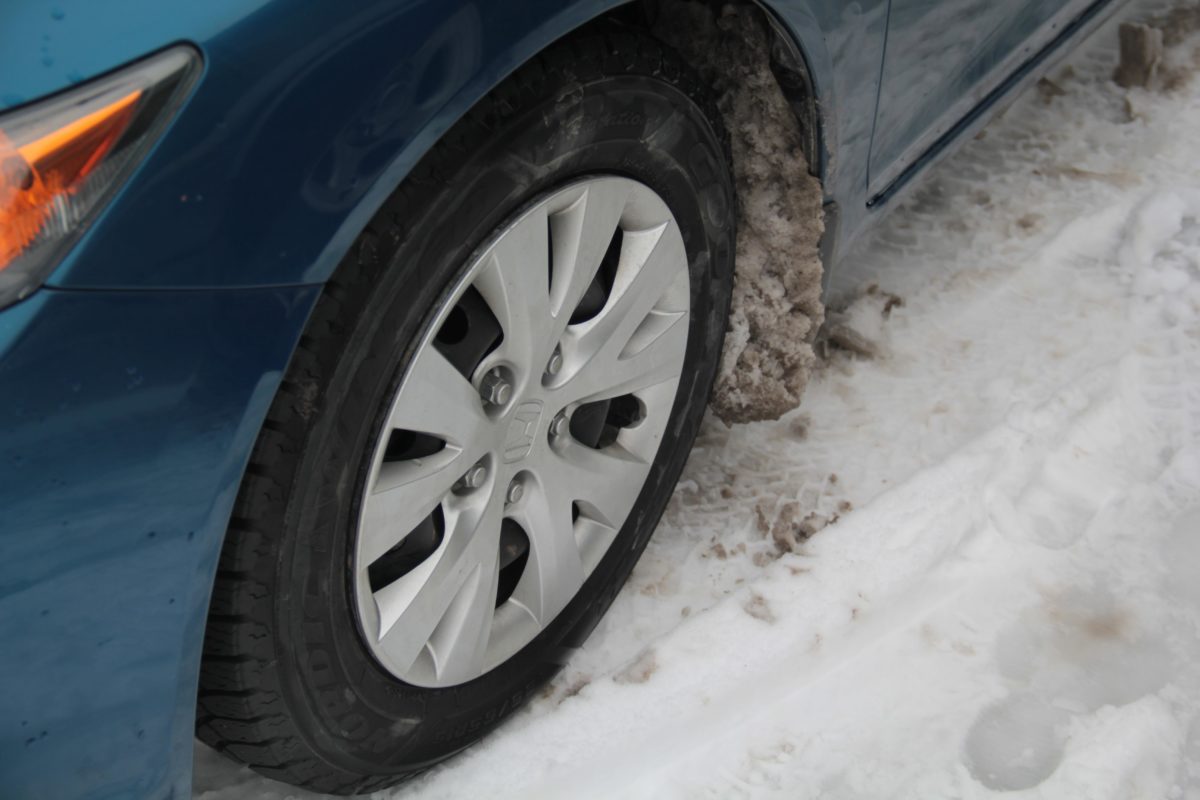Most students already have a lot of items they need to check off their to-do list before exams. Checking off winter tire installation may not be at the top of everyone’s list, but it should be.
Yes, winter tires are expensive and students may have trouble affording them, but you don’t need to have expensive high-end tires to see the benefits. The decision to spend money now could save you thousands of dollars in vehicle repairs down the road.
Some people may be thinking, “Why can’t I just keep my all seasons? It says it in the name, they’re good for all seasons?”
Those people are right, you can use them all year round, but they are poorly named. In a lot of places these tires are called three-season tires. If you live in an area that gets minimal snow, you should be fine, but if you’re living in the Maritimes, you’re going to have a problem.
There are a lot of differences in how winter tires and all-season tires are made. When the temperature drops closer to the negatives, summer and all-season tires start to harden up. This is comparable to a hockey puck sliding on ice. Winter tires are made from a softer compound that is resilient to hardening in freezing conditions. A softer tire will flex and form to the road, snow and ice, giving your tires more surface to grip.
The tires also have added silica into the compound that works like sandpaper, giving more grip. Some compounds have more abrasive material. There is always the option of studded tires, but that only works well in certain conditions and increases the cost of each tire.
Winter tires generally have a more aggressive tread pattern, and there is good reason for this. In addition to better grip and contact to the road, winter tire tread is designed to force water and slush away from the surface of the tire. This provides a clear surface under the tire for grip while braking and cornering. When water ends up under tires it can cause a skating or hydroplaning effect.
Because of the better surface area and traction, breaking distance is increased in inclement conditions. Braking distance is decreased by 20 to 30 per cent in bad road conditions compared to all-seasons.
If you can spare the money at the time, buying a separate set of wheels (or rims) to mount your winter tires on will save you money in the years to come. At most shops, it will cost between $60 to $80 to change your tires. If you have your tires mounted on wheels you can easily change from your summers to winters in your driveway and save a little bit in the end.
Winter tires should also be downsized, in both diameter and width, from the stock tire size. It helps with traction in the deep snow by cutting down through the snow and making better contact with the ground. Smaller wheel size means that you can get a tire with a bigger side wall, which will help against wheel and tire damage in harsh icy conditions and during the spring when pot holes become prominent.
While changing over to the winter tires can save you thousands or dollars in repairs, and potentially save your life, the most important benefit is that you’ll be able to make it up the hill and get to class on time.

